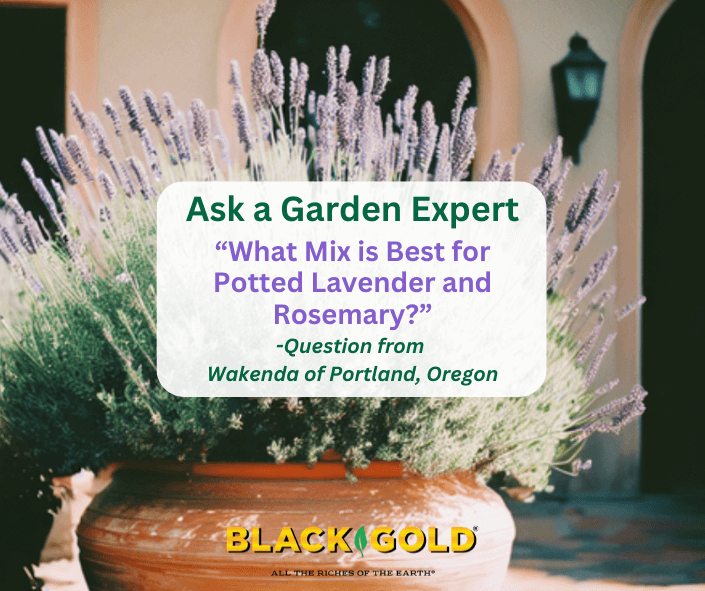
“What is the best soil mixture for potted rosemary and lavender?” Wakenda of Portland, Oregon.


The squashes of summer are versatile in summer cooking and some of the easiest vegetables you can grow as long as you have a patch of good, sunny garden ground and a water source. Both summer squashes and zucchini are available in different sizes–bush, short-vine, and long-vine– and only a few pests and diseases cause them grief. Thankfully, rugged, resistant varieties, of the heirloom or hybrid sort, are available to make summer vegetable gardening less problematic.
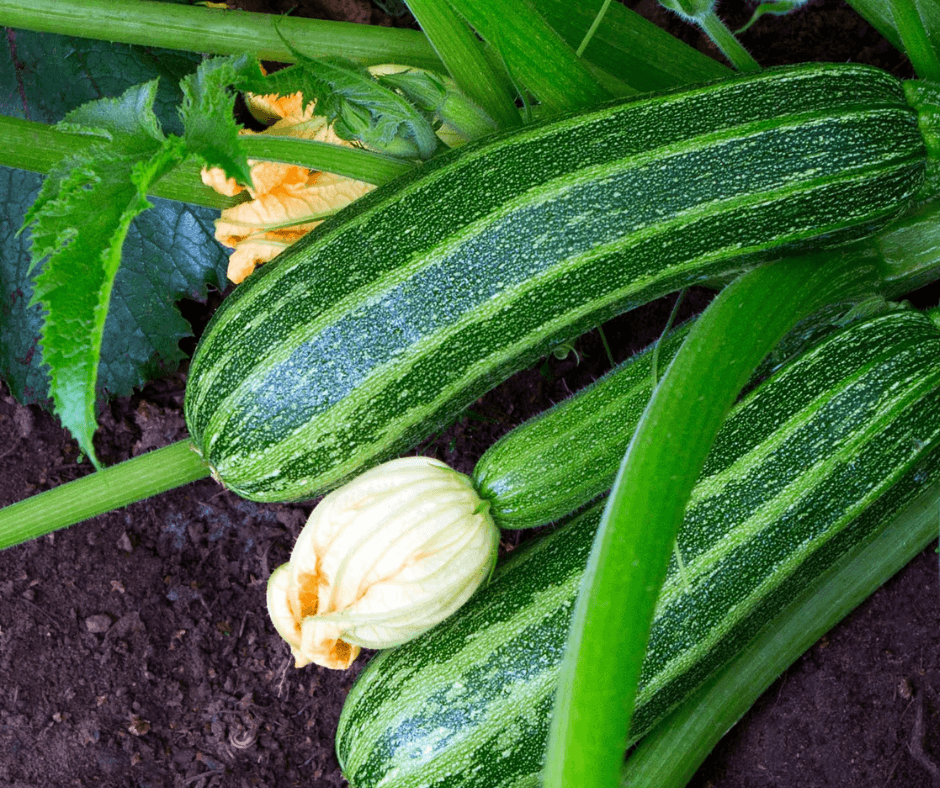
Before planting summer squash in a prepared garden bed, raised bed, or large container, be sure you have the following garden and environmental accommodations.
Both summer squash and zucchini originate from . Summer squash can be curved (crookneck), strait, or in patty pan form, and the color ranges from golden to pale green. Zucchini is often strait or bulbous at the end and may be dark green or striped with dark green. The fruits are best harvested when they have reached their projected size and the skin is still soft. The flowers are also edible and often stuffed and fried in Italian cuisine.
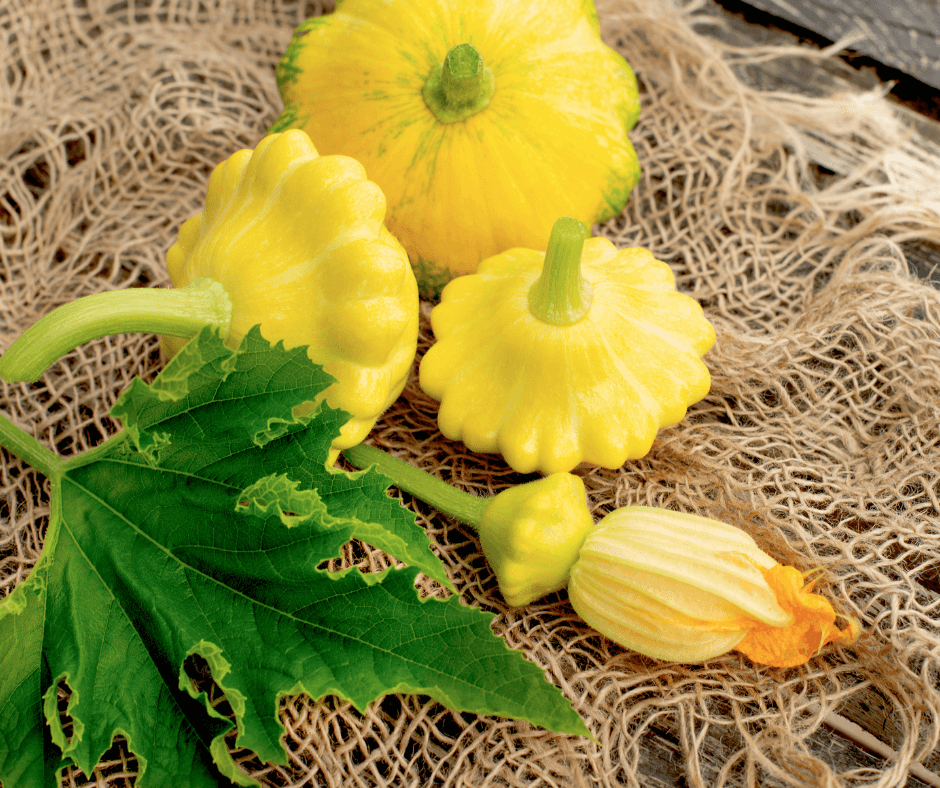
The Middle Eastern ‘Clarimore‘ (40 days to harvest) has pale green fruits that taste nutty and flavorful. The short-vine plants are heat tolerant and productive.
The 5-foot vines of ‘Fort Knox‘ (50 days to harvest) produce straight, golden squash with mild, smooth flesh. The hybrid vines are extra productive.
‘Summer Gold’ (48 days to harvest) is a productive, vining American heirloom plant with gold, strait-neck fruits.
The heirloom pattypan ‘Sunburst‘ (55 days to harvest) is a classic bush-forming variety with gold squashes. Harvest them small for sauteeing and stir-frying.
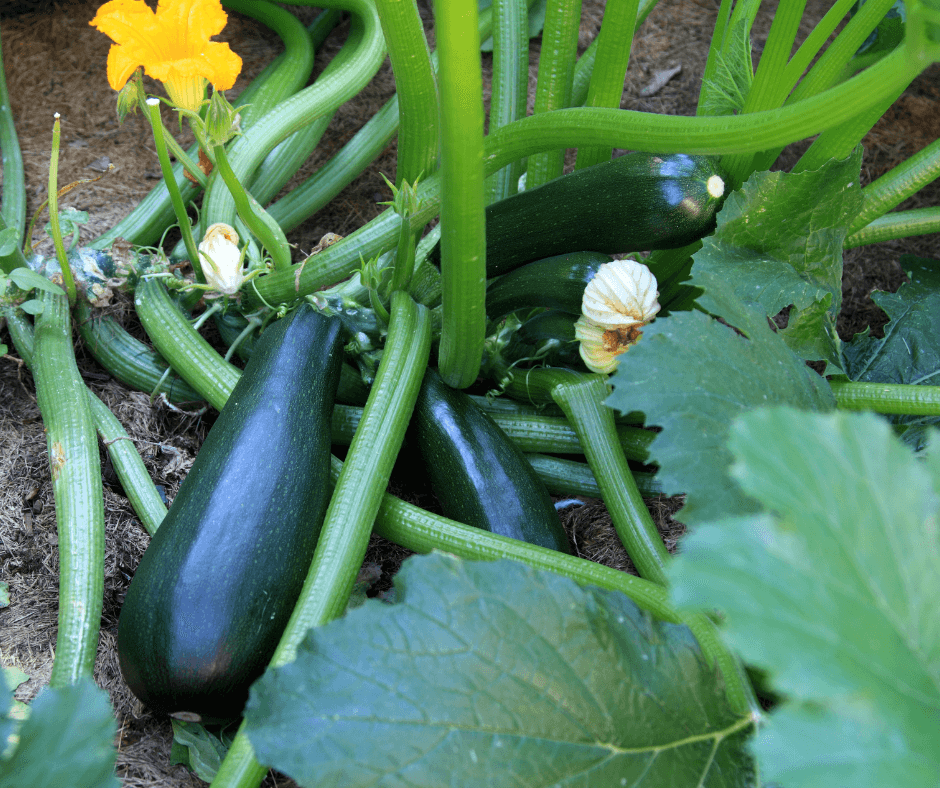
‘Black Beauty‘ (50 days to harvest) is a vining American zucchini with smooth, dark green skin.
The pleasantly round ‘Ronde de Nice’ is a European heirloom zucchini prized for stuffing. The bush plants reach only 3-4 feet across.
‘Romanesco‘ is a vining Italian heirloom with flavorful, ridged squash of pale green striped with medium green. The prolific vines will produce zucchini all season long, so plan to share some with friends and neighbors.
The non-stop producer ‘Zucchino Rampicante‘ can be harvested as a pale green, curved zucchini-like squash or allowed to age as a mild, flavorful winter squash. The Italian heirloom is a family favorite.
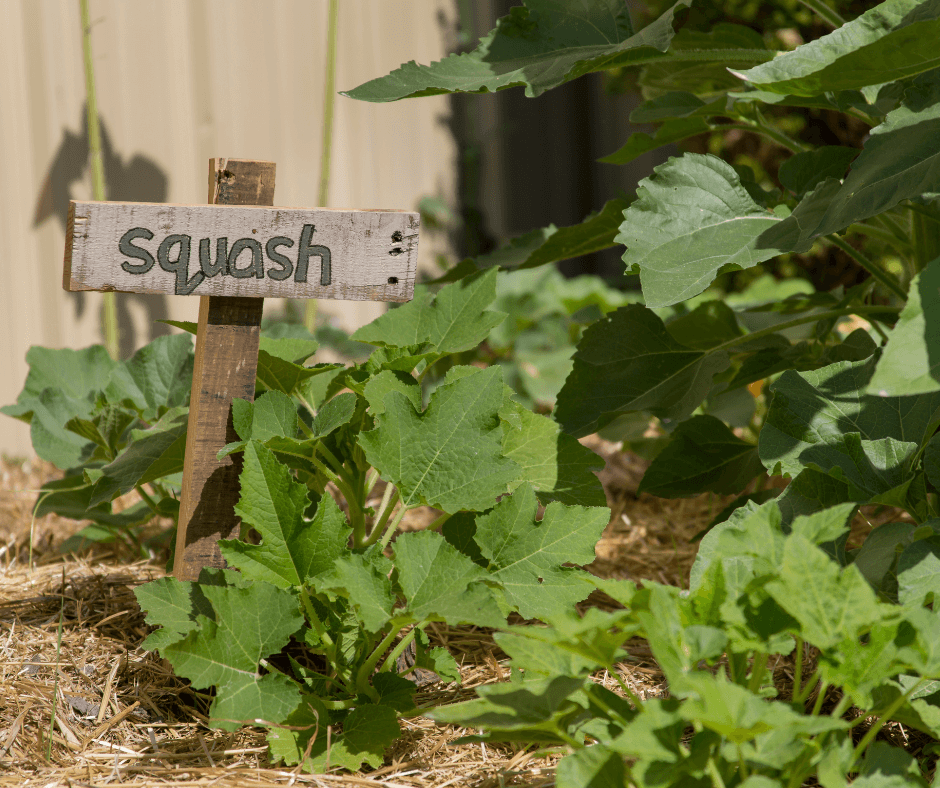
Summer squashes are warm-season crops that require summer heat to produce, so the best time to plant them is in late spring after the threat of frost has passed. They grow best in average to fertile soil with good drainage. We recommend you feed your garden soil yearly with rich organic matter and fertilizers formulated for vegetables. Once again, two recommended Black Gold products for added fertility are Black Gold® Natural & Organic Garden Soil, which 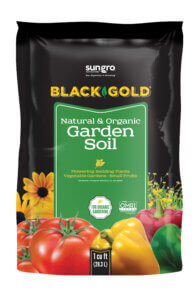 provides nutrition and needed organic matter, and our fertile Black Gold® Natural & Organic Garden Compost Blend. developing squash.
provides nutrition and needed organic matter, and our fertile Black Gold® Natural & Organic Garden Compost Blend. developing squash.
Squash are fast-growing vegetables and heavy feeders and drinkers, so keep them adequately fed and watered. Any quality fertilizer formulated for vegetables will work. Water after several rainless days to ensure soil moisture is adequate. The ground can be allowed to dry for several days between watering, but don’t let the soil become truly dry.
Pests, diseases, and poor fruit set are occasional problems with summer squash and zucchini.
Poor fruit set may be caused by a lack of pollinators. Squash plants have two flower types, male and female, and these are strictly bee-pollinated. Vines often produce male flowers first, followed by female blooms (they always have small fruits at the base of the flowers). Without pollination, the developing fruits of female flowers will shrivel. If your area lacks bees, then move the pollen on your own. Simply use a small brush to move pollen from a newly opened male flower to a newly opened female flower. It’s fast, easy, and will yield squash!
Squash vine borers are the biggest threat to these plants. For a detailed description of the pest, read our Ask a Garden Expert answer about how to beat squash vine borers.
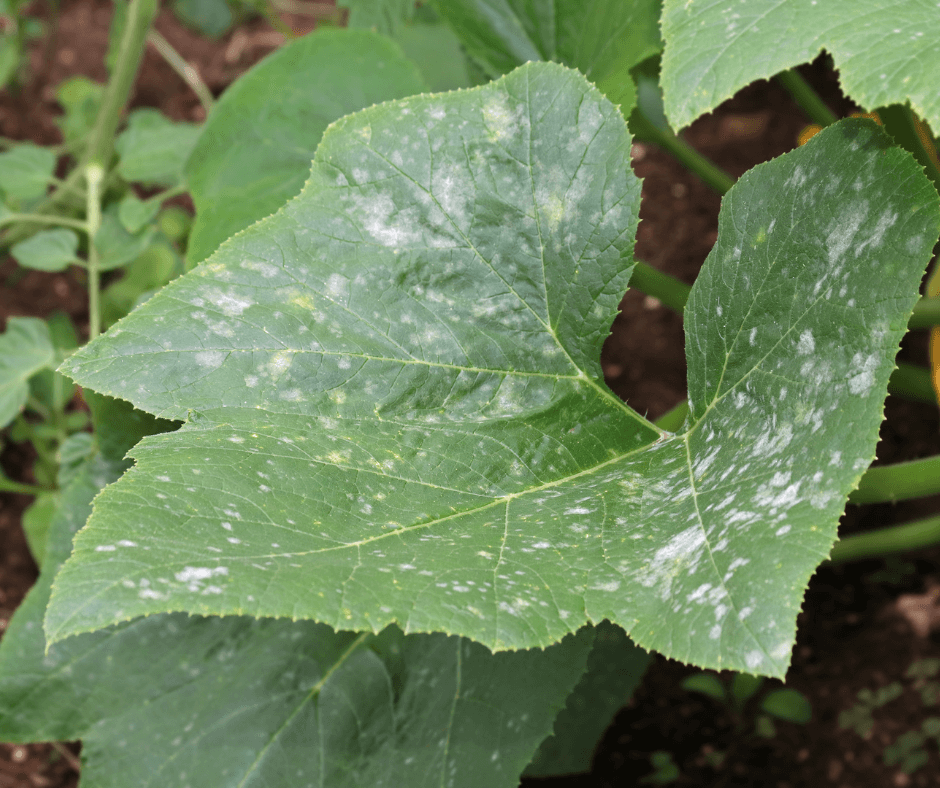
In hot summer weather, powdery mildew can infect squash leaves. Downy mildew can cause fruit rot in moist weather, especially if days and nights become cool. Downy mildew can appear when weather conditions are cool and moist and will cause fruit to rot and shrivel up early in development.

“I want to put underlayment cloth surrounding my 2 feet high by 2 feet deep by 15 feet wide garden bed to prevent the previous weeds I have tried so hard to remove from coming back. I want to grow Climbing Roses, Clematis, Foxgloves, Alliums, Cosmos, and Annuals in each 2 feet high by 2 feet deep by 3 feet wide area. Would that be enough space for all of these plants’ roots to successfully grow and be happy? Thank you.” Question from Anahita of Trabuco Canyon, California
Answer: The space is narrow, but the depth is good, though you may want to dig deeper in the area where you plant the climbing rose for long-term establishment. You should be able to grow most of the other plants you mentioned if the garden is sunny, though I am not certain you have the climate for a few of them. From what I have read, your area has hot, dry summers and cool, moist winters. Common foxgloves, some garden alliums, and more tender clematis are not adapted to the dry summer climates of the American Southwest. They will either need constant tending or they will die. Here are my suggestions for amending and preparing your garden bed followed by some plant ideas for you.
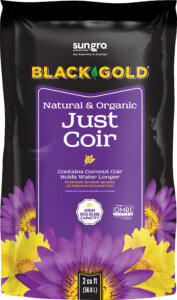 Fortify your soil with water-holding amendments that aerate the soil. Some amendments naturally hold water and act as reservoirs, making water available to plant roots for longer. Organic matter (peat, compost, leaf mold, and coconut coir) is on the front line of holding water and providing air to the soil. For instance, our Black Gold® Just Coir processed coconut coir soaks up 90% of its weight in water and has lots of air pockets to keep roots happy. Black Gold® Canadian Sphagnum Peat Moss and Natural & Organic Garden Compost are two quality amendments to consider. Liberally work additives such as these into your garden soil to support your plants and reduce the need to water as often.
Fortify your soil with water-holding amendments that aerate the soil. Some amendments naturally hold water and act as reservoirs, making water available to plant roots for longer. Organic matter (peat, compost, leaf mold, and coconut coir) is on the front line of holding water and providing air to the soil. For instance, our Black Gold® Just Coir processed coconut coir soaks up 90% of its weight in water and has lots of air pockets to keep roots happy. Black Gold® Canadian Sphagnum Peat Moss and Natural & Organic Garden Compost are two quality amendments to consider. Liberally work additives such as these into your garden soil to support your plants and reduce the need to water as often.
Black Gold Inorganic soil additives, like water-holding crystals and vermiculite, also hold water but are better suited for container gardening.
Plants from the Mediterranean and arid West tend to shine in the heat and drought. Those naturally adapted to more severe drought are often labeled as xeric or waterwise plants, and many specialty nurseries carry them. High Country Gardens is one great commercial online seller, and Xera Plants is another. The California-based Annie’s Annuals (they also sell perennials, shrubs, and many California natives) also has quite a few wonderful garden flowers for your area. Specialty succulent nurseries are also worth looking into, especially those with lists of hardy plants. I have bought many fine plants from the succulent nursery, Mountain Crest Gardens. Their plants always arrive in great shape and perform beautifully.
Here are some beautiful, reliable garden perennials and flowering vines for your area that may interest you, based on the list you presented.
I recommend you read the following article about ways to further protect your garden from drought.
Happy gardening,
Jessie Keith
Black Gold Horticulturist


“I grow several varieties of ninebark, including the straight species native, and have not had any trouble the past 30 years. Last year for the first time some of the branches began to show what looked like powdery mildew, then shriveled and eventually turned black. This was very disfiguring on these wonderful shrubs and happened on all varieties. I cut them back severely over the winter and hoped it was last year’s summer weather (hot and dry) that brought on the disease. I showed leaves to a garden center, but they weren’t familiar. It’s just started back up on my shrub (been cool and wet). Do you know what it is and how to treat it? Thanks so much.” Question from D Shirer of Brecksville, Ohio
Answer: Ninebark is known to get powdery mildew, fireblight, and leaf spots, but none of the diseases are typically fatal to the shrubs. Based on my knowledge and research, it sounds like ninebark powdery mildew, and/or other mildew species, are the likely causes of your ninebark troubles. Mildew infections can appear earlier in the season, though they do tend to be most problematic in warmer, drier weather of summer, as you have observed.
According to an Amerinursery article titled Physocarpus and Powdery Mildew, three powdery mildew species can be responsible. In the article, the author writes, “The susceptibility of eastern ninebark to the specific ninebark powdery mildew (Podosphaera aphanis var. physocarpi) and generalist powdery mildews (Phyllactinia guttata and Podosphaera macularis) has been well-established.” He further writes, “Ninebark plants infected by powdery mildew commonly develop superficial patches of white fungal colonies on plant parts. In addition, the ninebark-specific fungus may produce bizarre witches’ brooms of thickened stem tissue with stunted foliage discolored white or light pink. These brooms turn black and further detract from the plant’s appearance by persisting through winter and beyond.” Do the symptoms and signs sound familiar? There are several steps you can take to stop mildew and other fungal diseases on your shrubs.
I hope the information helps. Let me know if you have any other questions. If you would like to send photos. Please click here to learn how to reduce the size of your images for sending.
Happy gardening,
Jessie Keith
Black Gold Horticulturist

Answer: Our Black Gold Natural and Organic Raised Bed Potting Mix is specially formulated for raised beds and has all of the characteristics needed for growing herbs, including good drainage, ample organic matter, and a neutral pH. Additionally, I always recommend that gardeners mix a little natural topsoil into their raised beds at a ratio of one part topsoil to two parts bagged mix. The addition of natural mineral soil will increase the longevity of the mix and provide natural microbes and minerals.
The lemon balm and basil will grow beautifully in the organic-rich mix. In the areas where you plant thyme (or lavender and sage, for future reference), I recommend the addition of a fast-draining mineral amendment, such as sand or gran-i-grit. A small bag will help. Mint is a very aggressive herb that will completely take over a raised bed, so I suggest growing it alone in a large pot.
After your herbs have initially been planted, water them every other day to help them become established. After a couple of weeks, you will only need to water if the soil becomes dry in the absence of rain. Add a slow-release fertilizer for vegetables and herbs at the beginning of the season to ensure that they grow their best. (Click here for more information about growing essential culinary herbs.)
When determining how the amount of mix to add to your beds, use this formula:
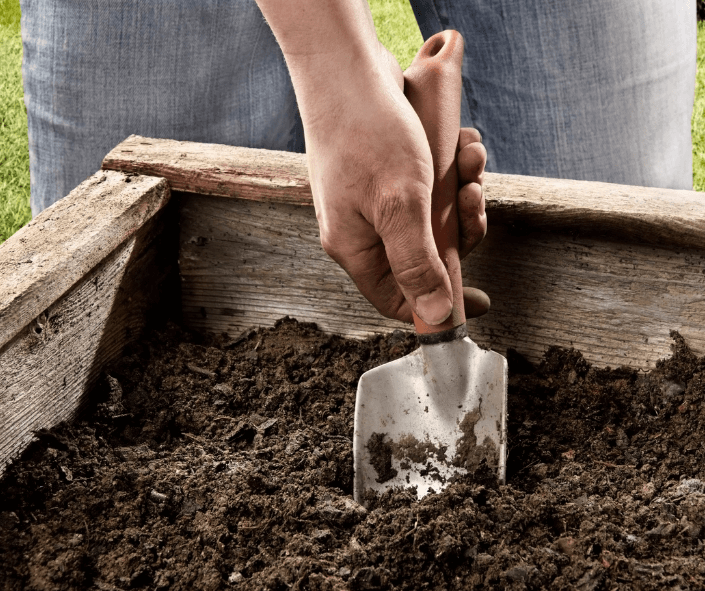
To find the amount of soil you will need, determine the volume of your square or rectangular bed by measuring its length, width, and height. Then use the following formula: V = L x W x H.
V = soil volume
L = bed length
W = bed width
H = bed height
So, if your bed happens to be 6 feet x 4 feet x 1.5 feet, multiply 6 x 4 x 1.5 = 36 cubic feet. Our raised bed soil is sold in 2.2 cf bales. To determine the amount of bagged soil you might need (36 cubic feet/2.2 cf bales= 16). If you plan to add topsoil at a 1:3 ratio, then you will need 2/3 mix (24 cubic feet (10.66 2.2 cubic foot bags of raised bed potting mix)) and 1/3 topsoil (12 cubic feet of topsoil). If you want to buy topsoil by the yard, then you must know yardage. Divide the answer in cubic feet by 27 to get the number of cubic yards you might need (36/27= 1.3 cubic yards).
Happy gardening,
Jessie Keith
Black Gold Horticulturist

Many Salvia species and varieties, whether annual or perennial, are tall, bold, and bloom continuously throughout summer or fall. Their flowers are favored by most pollinators, especially hummingbirds. An additional inviting fact: quite a few species are North American natives.
I have grown salvias in my garden for over 30 years, and annually plant favorites while seeking new varieties each year. When choosing new salvias, I look for brightly colored, low-maintenance options known to attract pollinators. Most require full sun, average soil with good drainage, and occasional deadheading. With good care, they should perform admirably into the fall months.
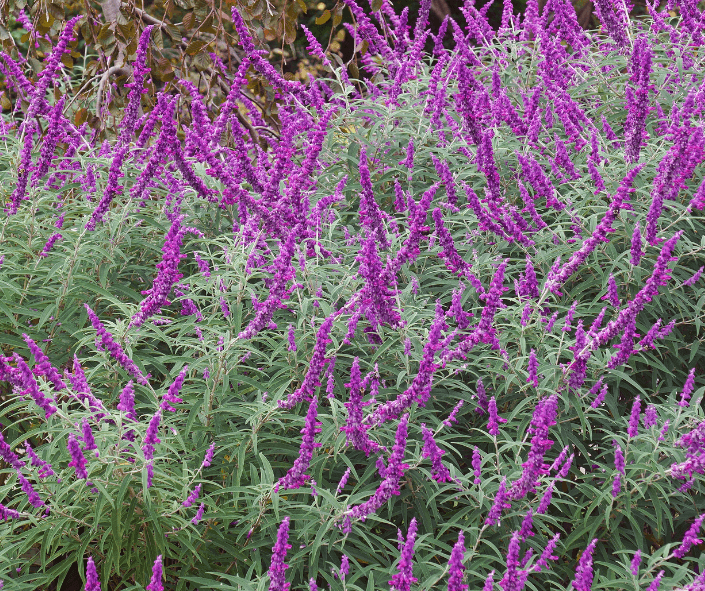
Expect Mexican bush sage (Salvia leucantha) to start blooming in late summer or early fall. The Mexican native has silvery strappy leaves, an upright habit, and wands of fuzzy flowers of purple, magenta, or silvery white. The plants thrive in warm weather and will tolerate moderate drought once established. A common variety with strong color is the purple-flowered ‘Santa Barbara’.

The award-winning Salvia Rockin’® Blue Suede Shoes™ from Proven Winners is a sensational cultivated hybrid of the 4-5 foot blue anise sage (Salvia guaranitica), another plant worth growing. The cultivar has won awards and accolades for one good reason; its solid garden performance. The bushy, 3-foot plants bloom nonstop in hot summer weather and will continue to flower until frost. No deadheading is required of these self-cleaning plants.

The old-fashioned Van Houtte Scarlet Sage (Salvia splendens ‘Van Houttei’, Zones 7-9, 3-4 feet) was first introduced in the 1800s and continues to be planted today. Its flowers are darker red than average, and the stems are taller than most scarlet sage varieties. Provide full sun and deadhead regularly for nonstop summer flowering.

Here is a salvia I’d like to see more of in gardens: Skyscraper™ Orange Salvia (S. buchananii x S. splendens Skyscraper™ Orange, Zones 10-11, 2-2.5 feet) from the Ball® Seed Company. It is a real beauty with spires of orange-red flowers that bloom all summer and fall. The blooms are profuse on the 2019 Classic City Award winner (University of Georgia garden trials). I try to plant one every year!

The Texas and Mexican native Texas sage (Salvia greggii, Zones 6-10, 2-3 feet) is a bushy perennial with bright red flowers first appearing in the late summer. Bees and hummingbirds enjoy the blooms. There are many cultivated varieties available in traditional red as well as pink and white hues. A favorite is the choice, ever-so-lovely Teresa’s Texas Sage (Salvia greggii ‘Teresa’) with its pale pink and white flowers.
As the plant’s origins suggest, Texas sage tolerates hot, dry weather once the plants are established in the garden. Excess soil moisture can kill them, so plant yours on high ground.

Golden Delicious pineapple sage (Salvia elegans ‘Golden Delicious’) has the benefits of delightfully colorful foliage through summer and spikes of scarlet flowers in the fall. Expect migrating hummingbirds to visit the blooms. The unflagging plants thrive in hot summer weather, and the decorative leaves smell of minty pineapple.
Wendy’s Wish (Salvia ‘Wendy’s Wish’, Zones 9-10, 3-4 feet) has long, slender stems of tubular, magenta-pink flowers. It is a favorite in my garden and invites hummingbirds and bees by the dozens. I place mine in the back of the border alongside my favorite tiger-striped canna, ‘Striata‘.

All flowering sages are pollinator-friendly. Salvia flowers are most favored by bees and hummingbirds because their blooms are easily landed upon by visiting bees or fed upon by hovering hummingbirds. Nonetheless, the occasional butterfly may also manage to visit the flowers for nectar (image above).
Any of these salvias will grow beautifully in a sunny location with sharply drained, average to fertile soil amended with Natural & Organic Black Gold Garden Compost Blend. Their imposing heights make them most suitable as back-of-the-border plants or specimens in large pots. All mix beautifully with tall, airy ornamental grasses. Deadhead plants as their blooms begin to fade, and enjoy.
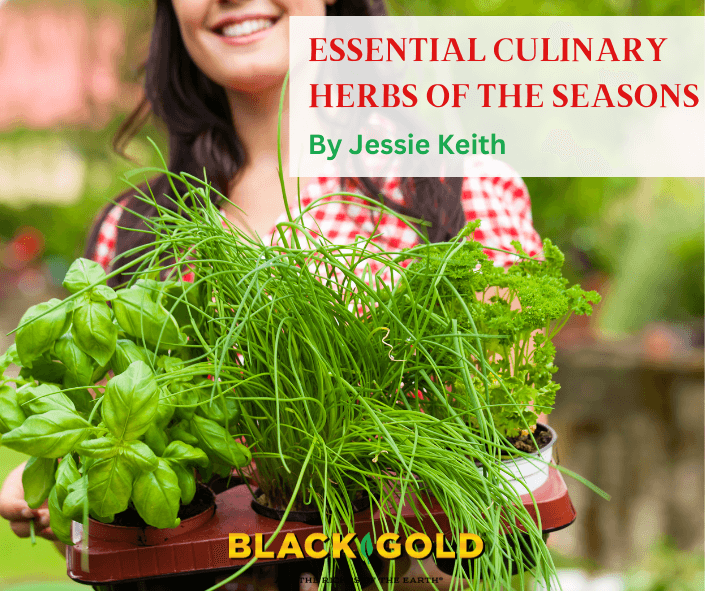
Stylish and serviceable herb gardens are a delight through the growing season when they appeal to the eye and senses and provide fresh herbs. In winter, stores of dried and frozen herbs make cooking a pleasure. If you don’t already have a culinary herb garden, you are missing out. And, there’s no reason not to grow one. Essential culinary herbs are the easiest plants in a food gardener’s repertoire.
Every culture relies on essential herbs to flavor its foods. In past blogs, we have written about French herb gardens, Indian herb gardens, herbal tea gardens, herb containers, lemon-scented herbs, and apothecary gardens, but oddly enough, we have never written about growing herbs essential to Western cuisine. These are the common (and pricy) herbs that homeowners buy at the grocery store (even though they grow like weeds). Herbs are yawn and water garden plants unless you want to make a show and create a formal herbary or knot garden.

The first chives of spring are so bright and welcome when added to fresh vegetables and salads, as are the tender leaves of parsley when they begin to unfurl and are at their sweetest. Fine cilantro and dill–both cool-season annuals–are two other spring herbs no garden should be without. In late spring, count on chamomile to produce its sweet daisies that are harvested and dried to make delicious, soothing tea to enjoy year-round. These are the spring herb essentials.
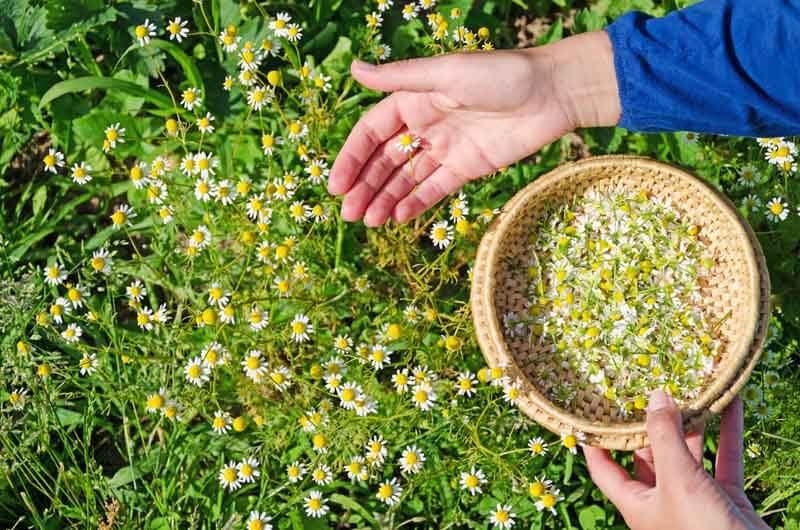
Chives (Allium schoenoprasum, USDA Hardiness Zones 4-8): Chives put forth tidy clusters of oniony, grassy foliage in spring. Pompons of edible mauve flowers bloom in mid-spring, rising above the upright foliage. Harvest them fresh, when they are most flavorful. In summer, chives wane in the heat but will often perk back up in fall.
Chamomile (Matricaria retutica, Zones 2-8) is a winter annual or short-lived perennial to sow in fall. It will overwinter as a ferny green rosette and then bloom in full glory with a flurry of small white daisies in spring. Harvest the flowers for drying when they just begin to open. Allow some plants to set seed to encourage new fall seedlings.
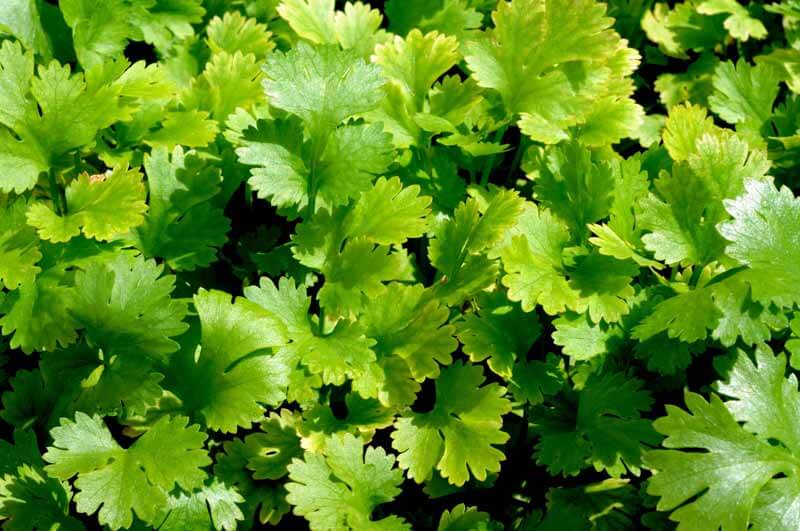
Cilantro (Coriandrum sativum) is a leafy annual that likes it cool and starts producing stems of white flowers and seeds as the weather heats up. But, that’s a good thing because its seedheads, which dry by summer, are crushed to make the spice coriander. Harvest the leaves while you can for guacamole, salads, and salsas. Also, consider cilantro a fall herb to seed in no later than early September.
Dill (Anethum graveolens) is a true spring annual herb that you only need to plant once. Harvest the ferny green leaves to flavor salads, spreads, and pickles, and
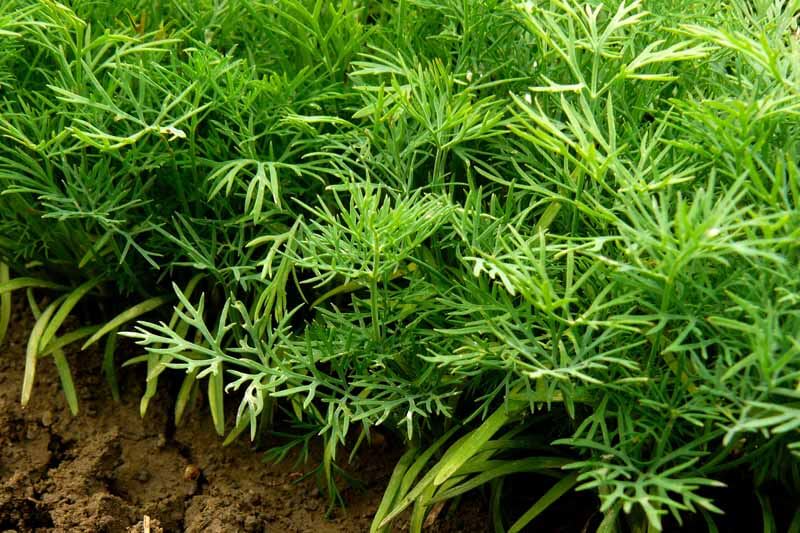
let the yellow-green umbel flowerheads dry for flavorful dill seed. Let some seeds fall to the ground and sprout for a second dill harvest in the fall.
Parsley (Petroselinum crispum) comes in curly and flat-leaved forms and lends fresh flavor to sauces, salads, and meats. Lush clumps of parsley leaves flourish in the cool spring weather and give way to flowering in the heat of summer, after which the plants die. If you replant parsley in the fall, it will often survive through winter.
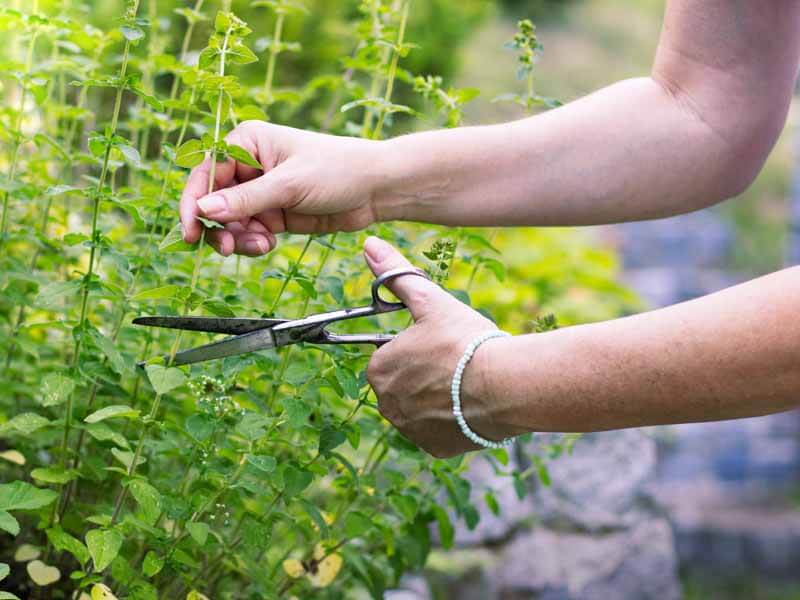
Sweet basil tastes like summer–whether used to flavor sauce, pesto or added to a citrusy summer drink. Mints of all kinds grow rampantly and need containment, but every gardener should have at least one pot of good mint. Thymes, especially lemon thyme, is a summer staple at my home that lends itself well to chicken, fish, salads, and vegetables. Oregano and piney rosemary are necessities for grilled meats and vegetables. These are the summer herb essentials.
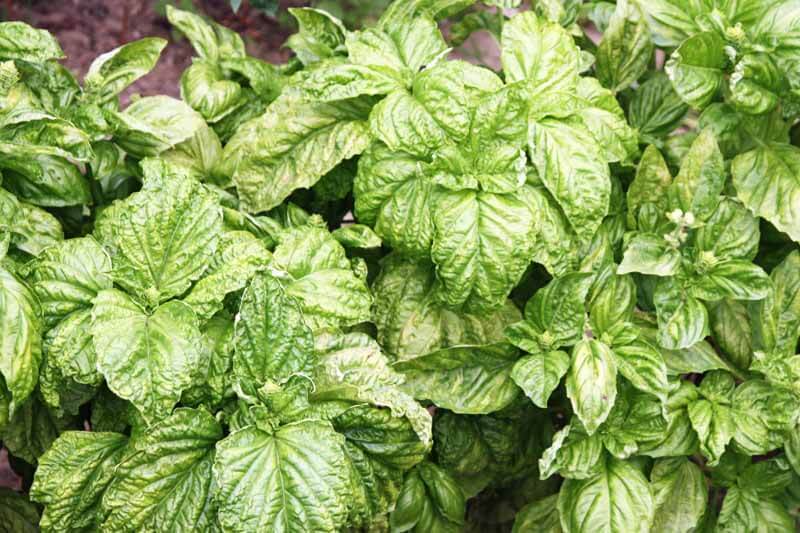
Basil (Ocimum basilicum) is a warm-season herb that’s grown as an annual. The key to keeping it sweet and flavorful is to clip off the flower heads as they appear. Grow it in the garden or in containers. (See the video below to learn how to care for container-grown basil.), and clip the leaves all summer to keep plants tidy and flavorful. (Click here to learn how to grow basil indoors in winter.)
Mint (Mentha spp.) leaves flavor summer mojitos, tabouli, and fresh mint tea. The plant is so easy to grow you can plunk a stem in a glass of water, and it will root in a week. Its aggressive nature is a mint’s only downfall. One seemingly harmless plant can take over a garden in no time, so plant it in a big pot filled with Black Gold Natural & Organic Potting Soil to keep its roots from roaming. When it starts to
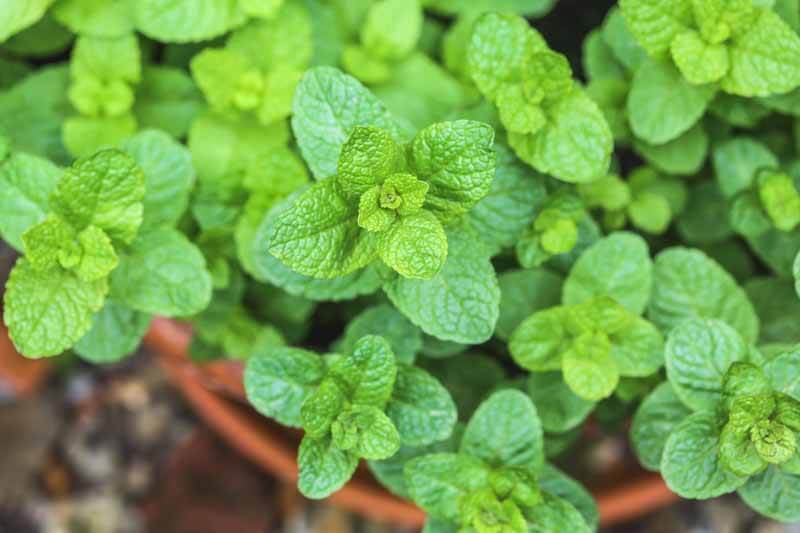
outgrow the pot, divide it, and give the spare to a friend (with fair warning).
Oregano (Origanum vulgare, Zones 4-10) has rooting stems that tend to spread, so be sure to give it space to grow. You can also contain oregano in a pot. Clusters of edible purple flowers bloom in midsummer, which attracts bees. Use the leaves to flavor meats, vegetables, and sauces in summer. In the fall, dry or freeze the leaves for winter cooking.

Rosemary (Rosmarinus officinalis, Zones 8-10) is a drought-tolerant, shrubby, evergreen herb with resinous needle-like leaves that taste great on meats and in sauces. Bees are attracted to its violet-blue flowers that bloom in late spring. The cold-tolerant variety ‘Arp’ (Zones 6-10) is a hardier option for northern gardeners. Dry the leaves for winter use.
Thyme (Thymus spp., Zones 5-9) has small, aromatic leaves that are evergreen. In late spring, the low, spreading, shrubby herb bears small clusters of flowers for bees that may be pink, purplish, or white. Plant it along a patio edge where it can spill across the pavement or in a pot. Harvest the leafy stems any time of year to add to many dishes or dry the leaves for herbal mixes.
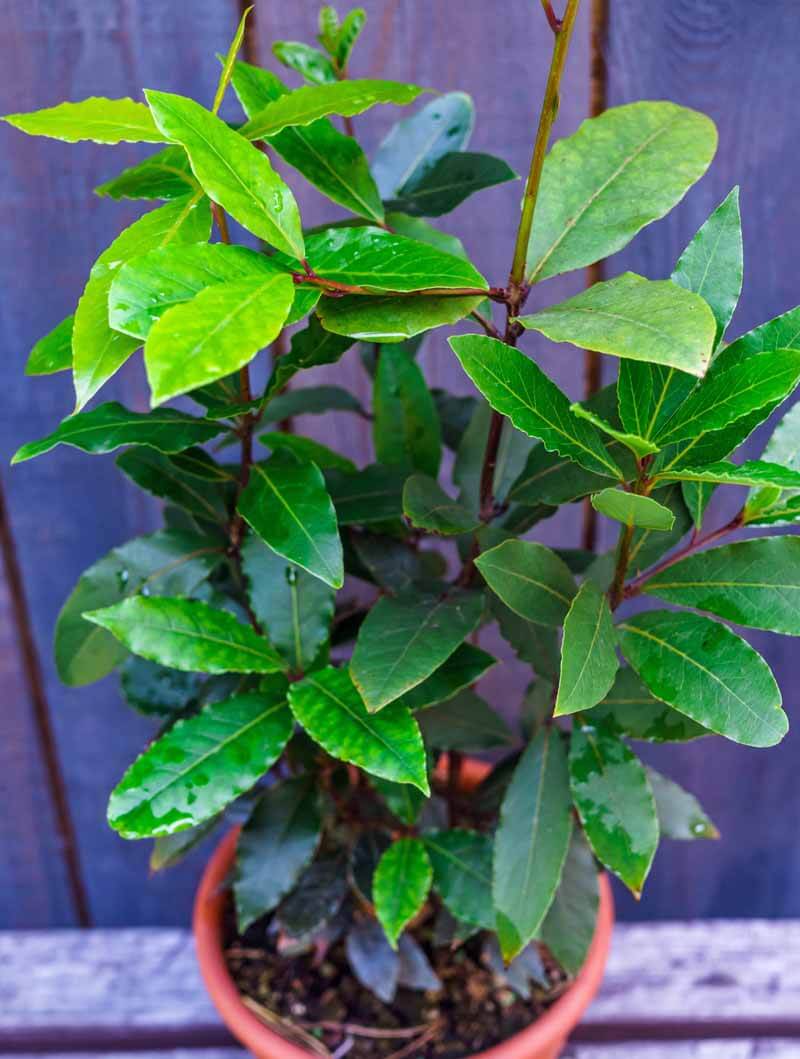
Sage tastes of turkey stuffing and pairs well with pumpkin. And bean soups never taste quite as good without the complement of winter savory. A big pot of bay leaf should be a winter houseplant for every gardener who cooks. Just be sure to take the pot outdoors in summer to let the Mediterranean tree to enjoy the sunshine. Spicy ginger is another indoor/outdoor tropical herb that will grow well in a sunny window. These are the essential herbs of winter.

Bayleaf (Laurus nobilis, Zones 8-10) will grow as a 20-30 foot evergreen tree where it is hardy, but if kept pruned in a pot, it will stay compact. Harvest the leaves for soups, sauces, and meats, but keep in mind that new leaves will not be produced until spring, so be sure not to strip the plant of all greenery and kill it. Pot-grown specimens thrive in OMRI Listed®Black Gold Natural & Organic Potting Mix. (Click here to learn more about growing bay leaf.)
Ginger (Zingiber officinale) grows very well as a potted house plant in a brightly lit spot with good humidity. Its roots can be harvested as the plants grow and used to make sweet and savory dishes. As with bay leaf, bring your potted ginger outdoors in summer to allow it to grow to its fullest. (Click here to learn more about growing ginger.)

Sage (Salvia officinalis, Zones 4-8) has felted, gray-green, evergreen leaves with a pungent flavor. The hardy shrubby perennial bears pretty lavender-blue flowers in summer, which are also edible and attract bees. It is best to harvest and dry leaves in the fall for winter cooking, but if you run out, you can always pick off a winter leaf or two without harming the plant.
Winter Savory (Satureja montana, Zones 6-8) The low, semi-evergreen winter savory looks attractive throughout much of the season. Its peppery leaves add flavor to green beans, soups, and stews. In summer, it has clusters of white or pinkish flowers that attract bees. Plant it along the edge of an herbal border.

To make it easy, all of these essential culinary herbs grow best in full sun and fertile soil with good drainage. Most are not too demanding when it comes to fertilizer, but a little all-purpose plant food at the beginning of the season never hurts. Spring is the best time to plant them, aside from tender indoor/outdoor herbs. Before planting, amend your garden soil with good compost, such as OMRI Listed® Black Gold Garden Compost Blend, to encourage good rooting and drainage.
When planning an herb garden, it’s smart to keep your annual and perennial herbs apart. Perennial herb borders are attractive and have permanence. They look right at home in raised beds or even pretty herbal rockeries. Just remember to reserve mints for big patio pots. Annual herbs are nice to plant among complementary vegetables. Dill is right at home planted alongside cucumbers, and almost everybody plants their sweet basil around garden tomatoes. Chamomile looks pretty when planted in a row beside spring greens or cabbages. Then keep your herbs harvested and well-tended to make the most of them all year round. (Click here to learn how to harvest and store herbs.)

“My Emerald Green arborvitae (Thuja occidentalis ‘Smaragd’) trees were planted by a professional landscaper along the outside of our screened-in porch in February 2019. In the first 3 years, they were lush and full. In the past 2 years, they have lost all of their needles in the side closest to the screen, have become spindly, and show no signs of new growth. What can we do to repair the damage? Have attached 3 photos. HELP!!! Thank you!” Question from George of Milton, Delaware
Answer: Emerald Green arborvitaes are tall, columnar, evergreen shrubs (15 feet by 3-5 feet) that require full sun (6 or more hours a day) on all sides to remain green all around. Sadly, yours have lost all foliage facing the shaded screen due to lack of light, while the sunnier side has maintained foliage. Moreover, based on the photo, it appears they may be competing for light beneath shade trees during part of the day, and the tall shrubs are planted too closely together too close to your porch. Lastly, their tall height prevents you from being about to see outside your porch, if you value your view.
Even with pruning and care, your trees will not develop healthy, green foliage on the shaded porch side, because there simply is not enough light. If the shrubs were moved, they may have a chance, though they are quite large. You might consider replanting shorter evergreens tolerant of shade. I am familiar with Milton, Delaware, and the area around Lewes and Rehoboth. I recommend planting an attractive shrub tolerant of lower light and the sandy, coastal-plain soils of Sussex County. I’ll recommend some good evergreen and non-evergreen shrub options.
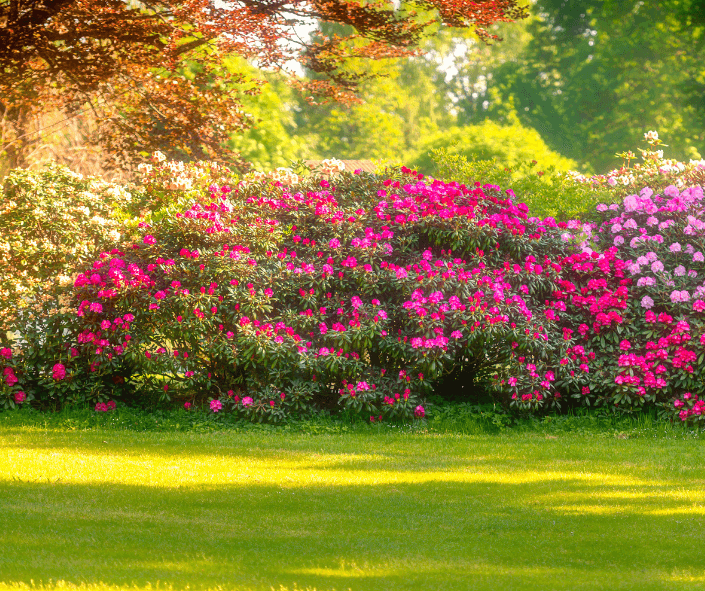
Inkberry (Ilex glabra cultivars). The native shrubby evergreen is tolerant of partial shade, unlike most evergreen hollies. There are many quality varieties available for sale. According to an extensive study at Longwood Gardens, ‘Densa‘ was the best-performing variety trialed. It reaches a mature height of 4-7 feet and is easily pruned. The 5-foot ‘Shamrock‘ is another notable variety to look for, and Proven Winners has introduced several other good inkberries. Give them plenty of water, especially as they are becoming established in the first year.
Azaleas or Rhododendrons may be evergreen or deciduous and quite a few grow beautifully in the area. the evergreen PJM Hybrid Rhododendron (4-6 feet at maturity, Zones 4-7) is a good option with an attractive, rounded habit, lavender-pink flowers that bloom in mid-spring, and evergreen foliage (dark green in summer and reddish in winter). It is tough, reliable, and tolerant of shade.
Hydrangeas provide a good deciduous option with summer flowers. I favor dwarf varieties of oakleaf hydrangea (Hydrangea quercifolia), like Ruby Slippers, or a smooth hydrangea (Hydrangea arborescens) like the tough, 5′ x 5′ Lime Ricky.
Contact the Delaware Center for Horticulture for more good shrub ideas.
Before planting any new shrubs, consider amending your soil with organic matter to fill in the sandy pore spaces and hold water and nutrients. Black Gold® Natural & Organic Garden Compost Blend or peat moss are good, organic options.
Happy gardening,
Jessie Keith
Black Gold Horticulturist

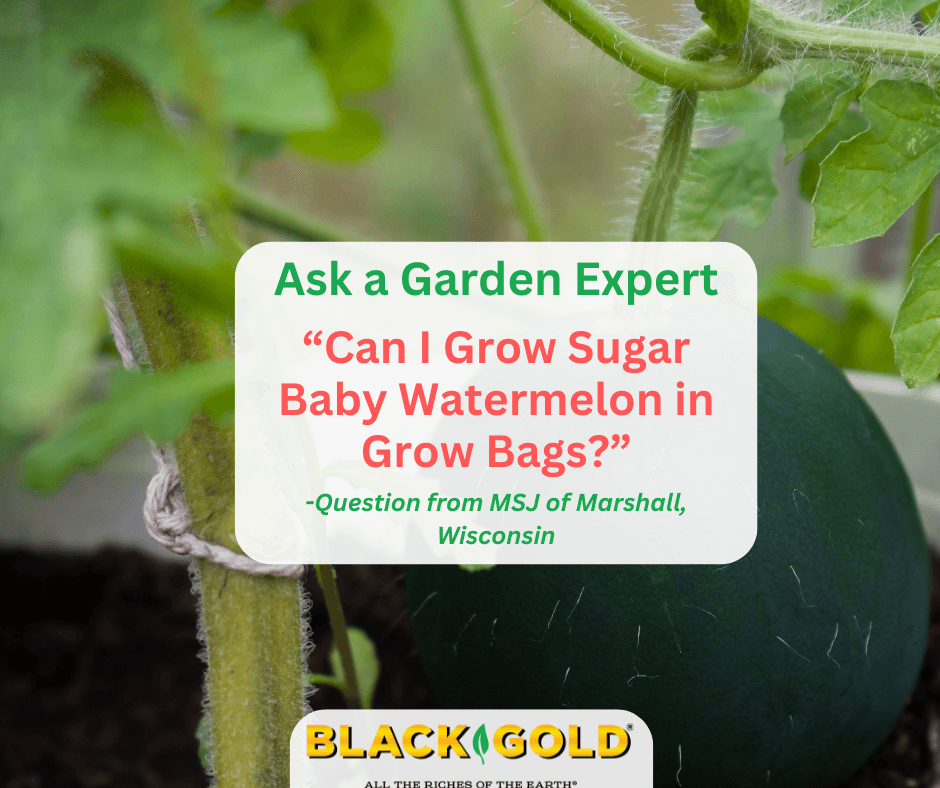
Answer: Watermelons are heavy drinkers and feeders with hefty root systems that demand more space. Even more compact vines, like those of ‘Sugar Baby‘, grow to reach 5-6 feet long (sometimes longer) and need plenty of water, nutrients, space, and sunlight to produce their ample 12-pound fruits. Stressed vines produce fewer, smaller melons. (Click here to watch our video about growing watermelons. Your cultivar is mentioned in the piece.)
 If planting them in-ground is not an option, and you want to raise them in grow bags, then choose a very large grow bag to fully support the plant. We have had good luck growing in Smart Pots® and have even trialed them using our mixes. Smart Pots are available in all sizes (from 1-1000 gallons), and the containers are reasonably priced. A 20-gallon pot will support three healthy vines. We recommend getting two bale-sized bags of Black Gold® Natural & Organic Flower and Vegetable Soil. The bales are 2.2 cf, so one and one-quarter bales will fill a 20-gallon pot. The rest of the soil can fill other pots or be saved to replenish the Smart Pot® soil at a later time.
If planting them in-ground is not an option, and you want to raise them in grow bags, then choose a very large grow bag to fully support the plant. We have had good luck growing in Smart Pots® and have even trialed them using our mixes. Smart Pots are available in all sizes (from 1-1000 gallons), and the containers are reasonably priced. A 20-gallon pot will support three healthy vines. We recommend getting two bale-sized bags of Black Gold® Natural & Organic Flower and Vegetable Soil. The bales are 2.2 cf, so one and one-quarter bales will fill a 20-gallon pot. The rest of the soil can fill other pots or be saved to replenish the Smart Pot® soil at a later time.
Smart Pots and our quality mixes both last and can be reused. Once your summer watermelons are finished, simply pull the vines, and plant something new for the fall. Any cool-season vegetables, such as lettuce, kale, carrots, turnips, and beets, will grow beautifully in the pots.
I hope the information helps. Have a good gardening season.
Jessie Keith
Black Gold Horticulturist


Answer: You are in luck! The outdoor Black Gold Natural & Organic Flower and Vegetable Soil will support your houseplants and encourage good growth. There are a few differences between the mixes, but both are good for potted plants. Please note the characteristic differences below. Our Black Gold All-Purpose Potting Mix has more nutrients to feed plants for up to 6 months, while the outdoor mix is high in organic matter to support good growth. I recommend you invest in a good quality fertilizer for houseplants to feed your plants, as the Black Gold All Purpose Potting Mix would have done. Water-soluble fertilizer or slow-release fertilizer will work to feed your plants, depending on how often you want to feed them. The type of fertilizer will depend on the plants you are growing.
Happy gardening,
Jessie Keith